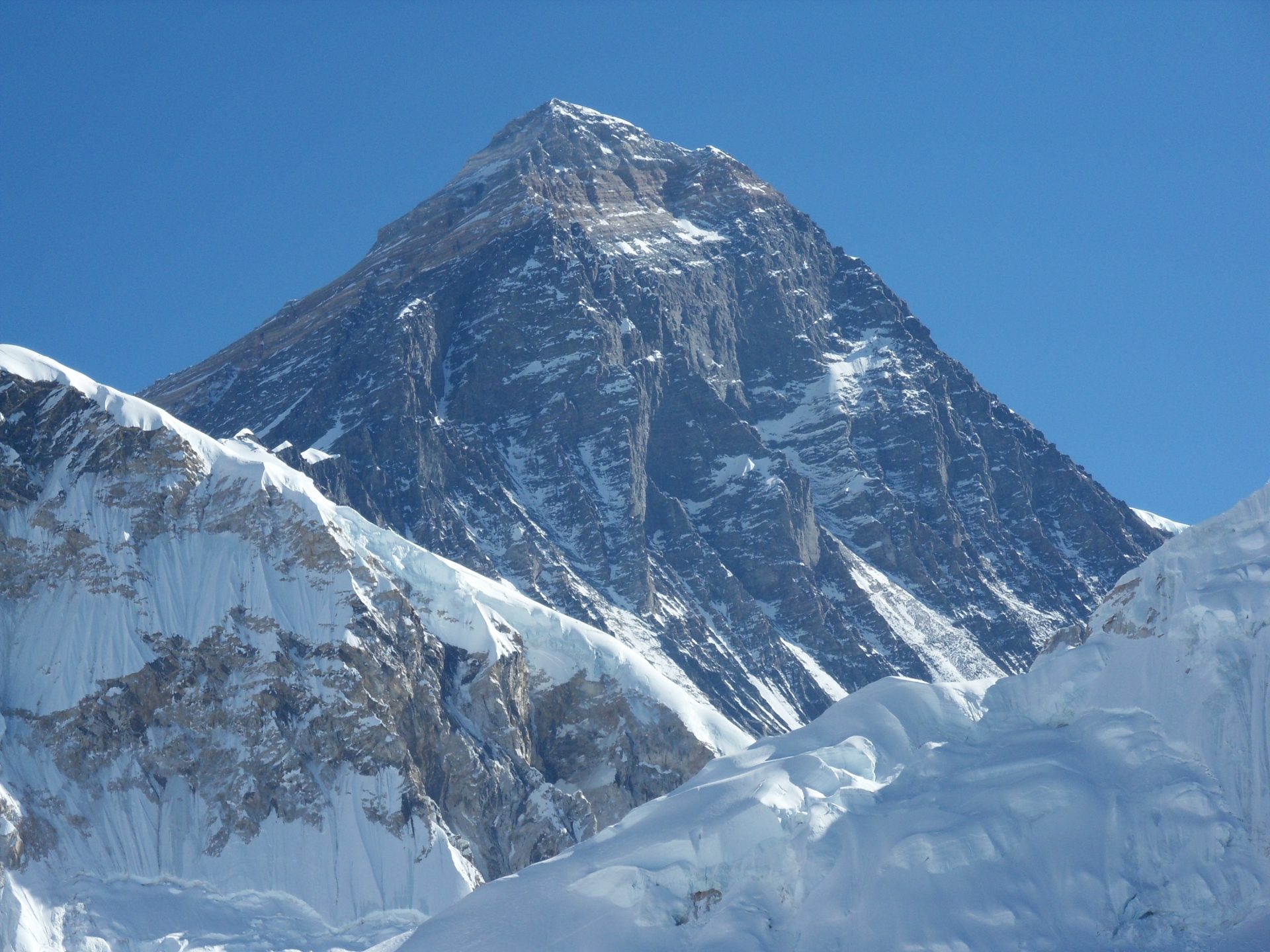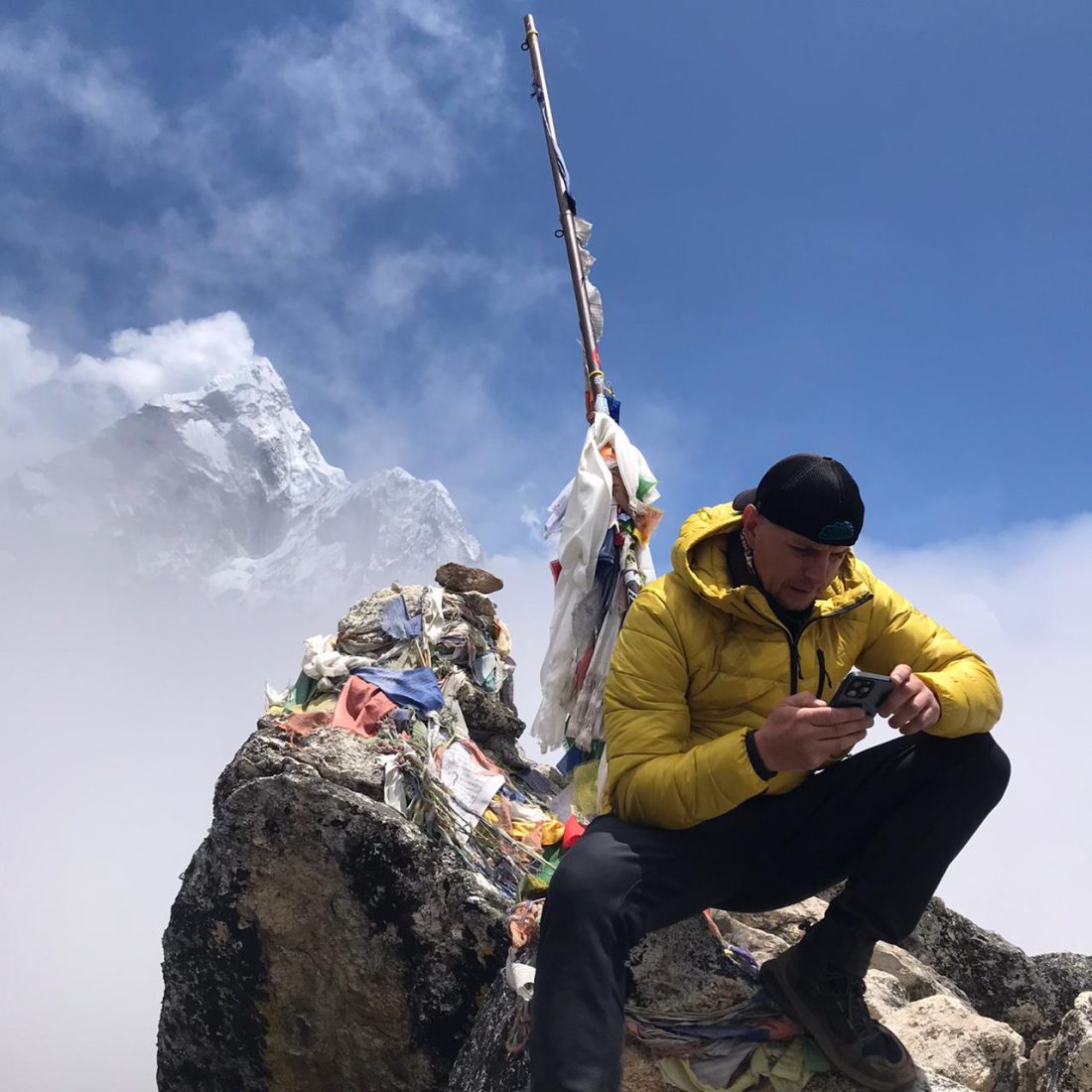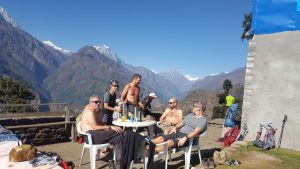Everest Base Camp and Gokyo Lakes Trek : Few treks on earth match the sheer beauty, cultural depth, and sense of adventure as the Everest Base Camp & Gokyo Lakes trek. Walking beneath towering 8,000-meter peaks, staying in Sherpa villages, watching sunrise from Kala Patthar, and gazing over turquoise Himalayan lakes from Gokyo Ri — this is more than a trek, it’s a life milestone.
In this you’ll find everything you need: day-to-day itineraries, packing lists, acclimatization advice, costs, flights, insurance, maps, villages, seasonal tips, and even add-on options like the Three High Passes trek. Our goal is that you won’t need to look anywhere else — this is the one-stop Everest Base Camp + Gokyo Lakes resource.
If you want a shorter trek, a helicopter return, or a challenging Three Passes circuit – you’ll find it here too.
Quick Facts at a Glance: Everest Base Camp and Gokyo Lakes Trek
- Duration: 14 – 18 days (longer if including Three Passes)
- Highest points: Kala Patthar (5,545 m), Gokyo Ri (5,357 m), Everest Base Camp (5,364 m)
- Difficulty: Moderate to strenuous
- Accommodation: Teahouses/lodges
- Best seasons: March–May, September–November
- Permits required: Sagarmatha National Park, Khumbu Pasang Lhamu Rural Municipality permit
- Starting point: Lukla (flight from Kathmandu or Ramechhap/Manthali)
Pre-Trek Essentials: Everest Base Camp and Gokyo Lakes Trek
1. Trekking Permits
You need two main permits:
- Sagarmatha National Park Permit (~USD 25)
- Khumbu Pasang Lhamu Rural Municipality Permit (~USD 20–25)
For trek card and registration, open Khumbu Trek Card
For Gokyo or Three Passes, these two are usually enough – though your trekking agency will update you if rules change.
2. Best Time to visit Everest Base Camp & Gokyo Trek:
- Spring (March–May): Rhododendrons, moderate temps, busier trails.
- Autumn (Sept–Nov): Clear skies, crisp views, stable weather.
- Winter (Dec–Feb): Quieter, colder, lodges may close.
- Monsoon (Jun–Sept): Green but wet; frequent Lukla flight delays.
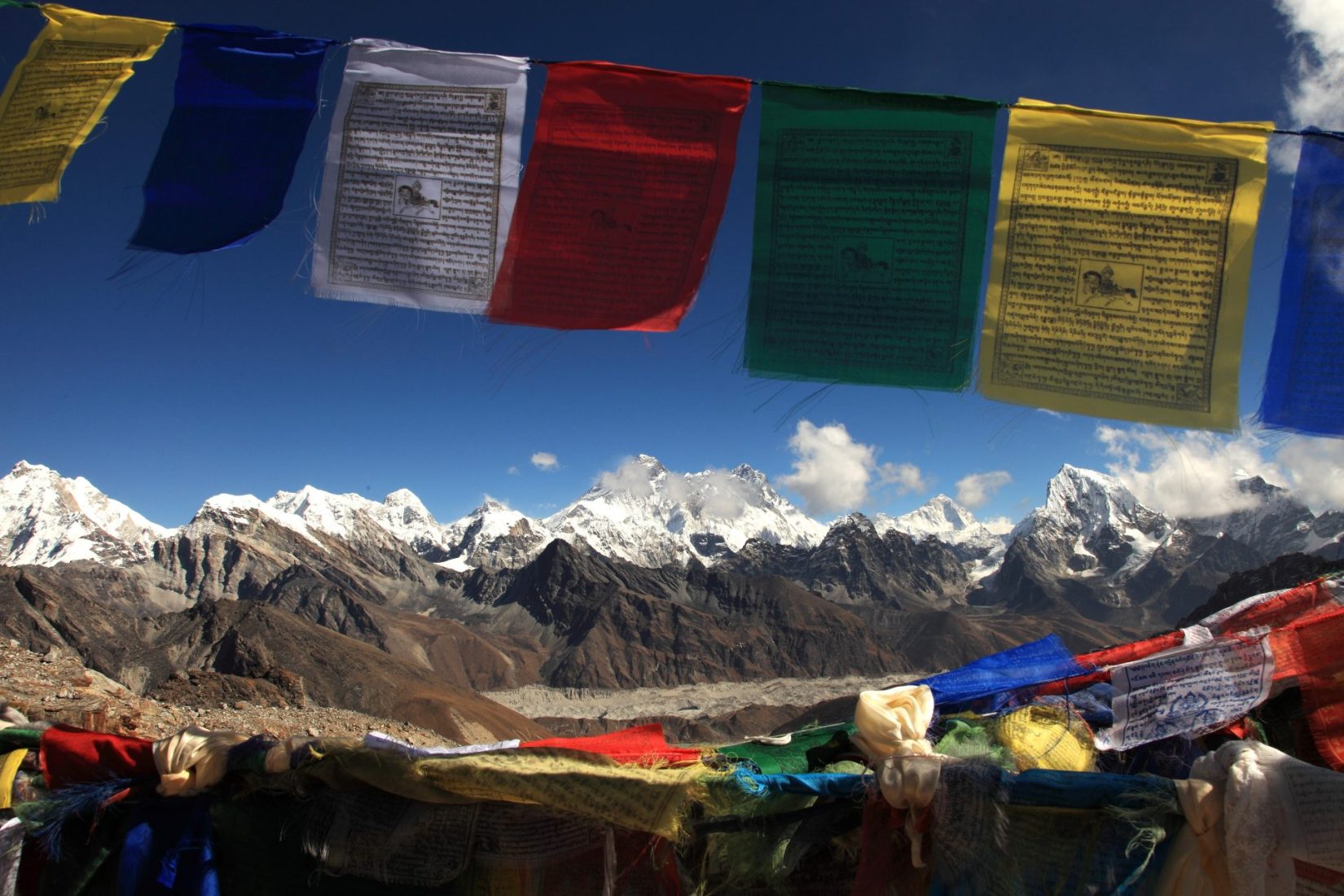
3. Flights to Lukla
- Peak season: Flights often operate from Ramechhap/Manthali Airport (4–5 hrs drive from Kathmandu) to reduce congestion at Kathmandu airport.
- Shoulder season (Feb–March, Nov–Dec): Direct Kathmandu–Lukla flights possible.
- Helicopter option: Shared helicopter seats available, around USD 550–600 per person.
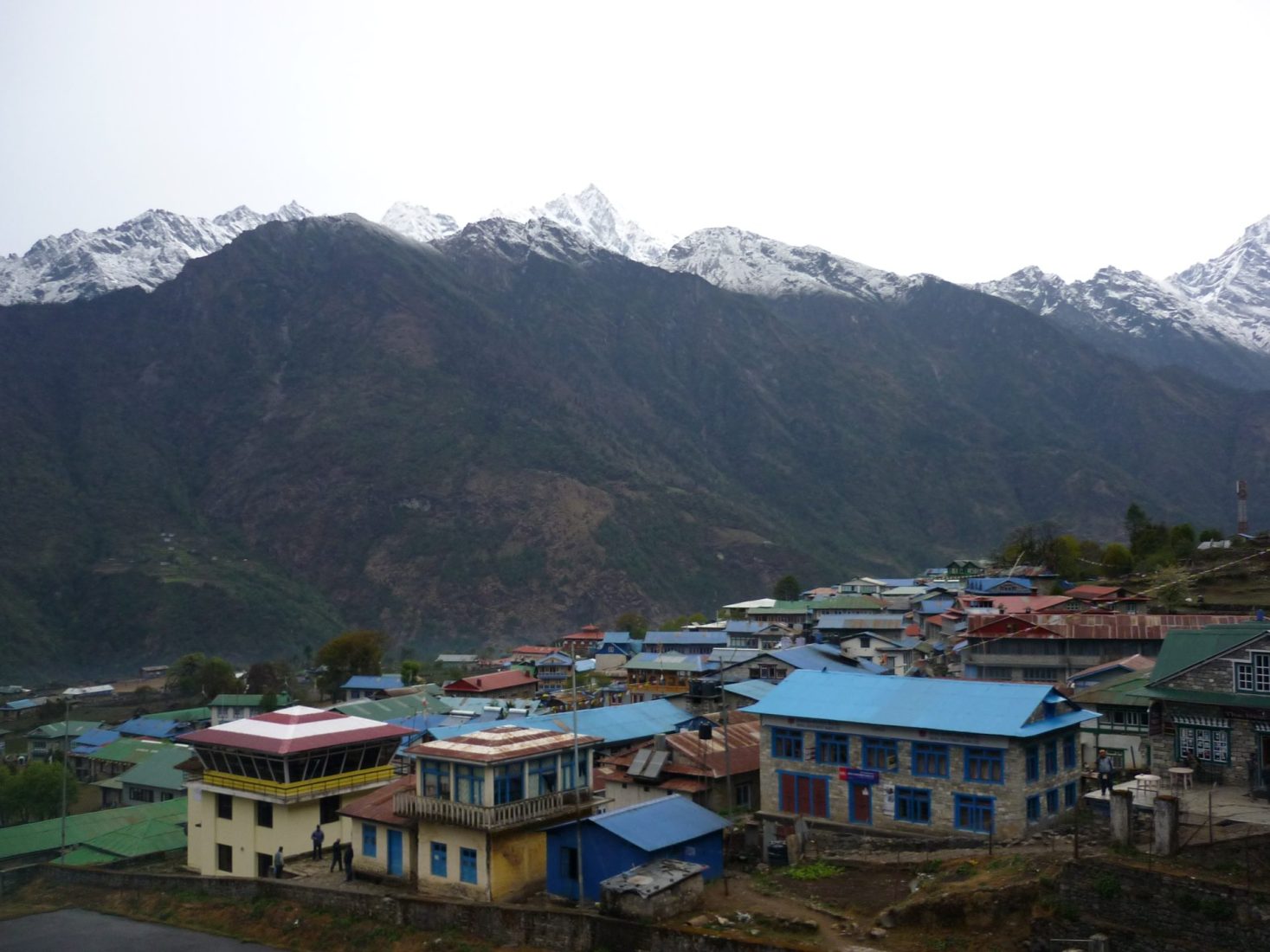
4. Travel Insurance
A must. Ensure your insurance covers:
- High-altitude trekking (up to 6,000 m)
- Helicopter evacuation (USD 5,000–7,000 cost if uninsured)
- Medical emergencies
5. Training & Preparation
- Start 2–3 months before trek: cardio, stair climbing, long hikes with weight.
- Mental prep: It’s not a race — acclimatization is key.
The Route: Day-by-Day Itinerary: Everest Base Camp and Gokyo Lakes Trek
Here’s a comprehensive itinerary for the Everest Base Camp + Gokyo Lakes trek, including acclimatization, Kala Patthar, and Gokyo Ri.
Day 1: Fly Kathmandu/Ramechhap → Lukla (2,860 m) → Phakding (2,610 m)
- Scenic 30-minute flight to Lukla, the gateway to Everest.
- Trek 3–4 hrs along the Dudh Koshi River.
- Overnight in Phakding.
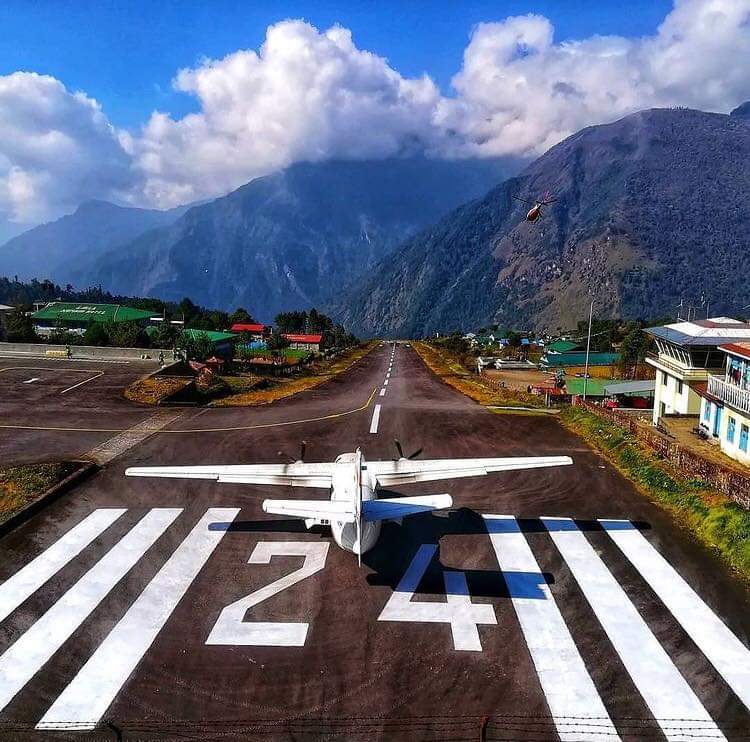
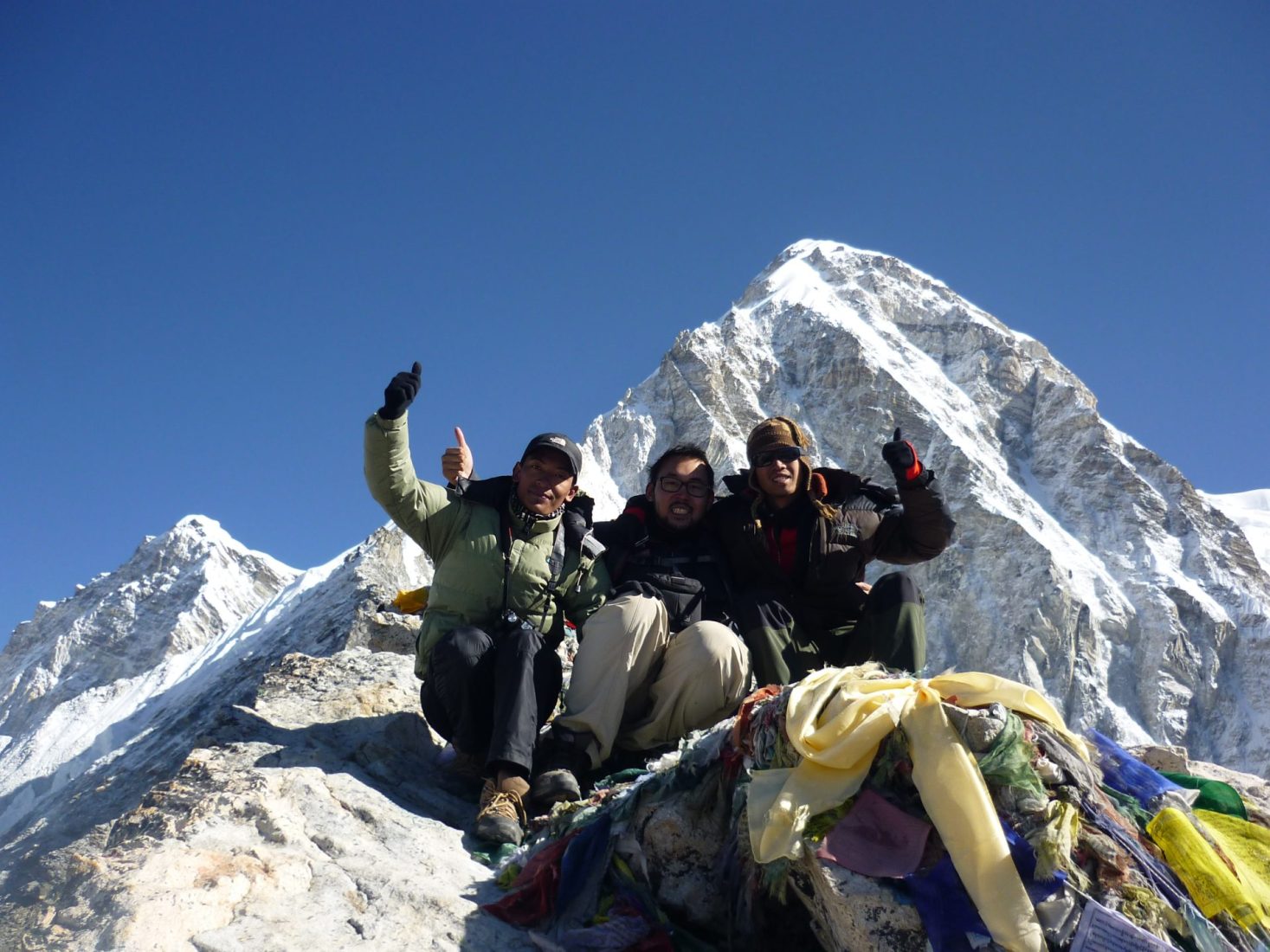
Day 2: Phakding → Namche Bazaar (3,440 m)
- Cross suspension bridges including the famous Hillary Bridge.
- Steep climb into Namche Bazaar, Sherpa capital.
- Overnight in Namche.
Day 3: Acclimatization in Namche
- Side hike to Everest View Hotel or Khumjung village.
- Visit museums, bakeries, markets.
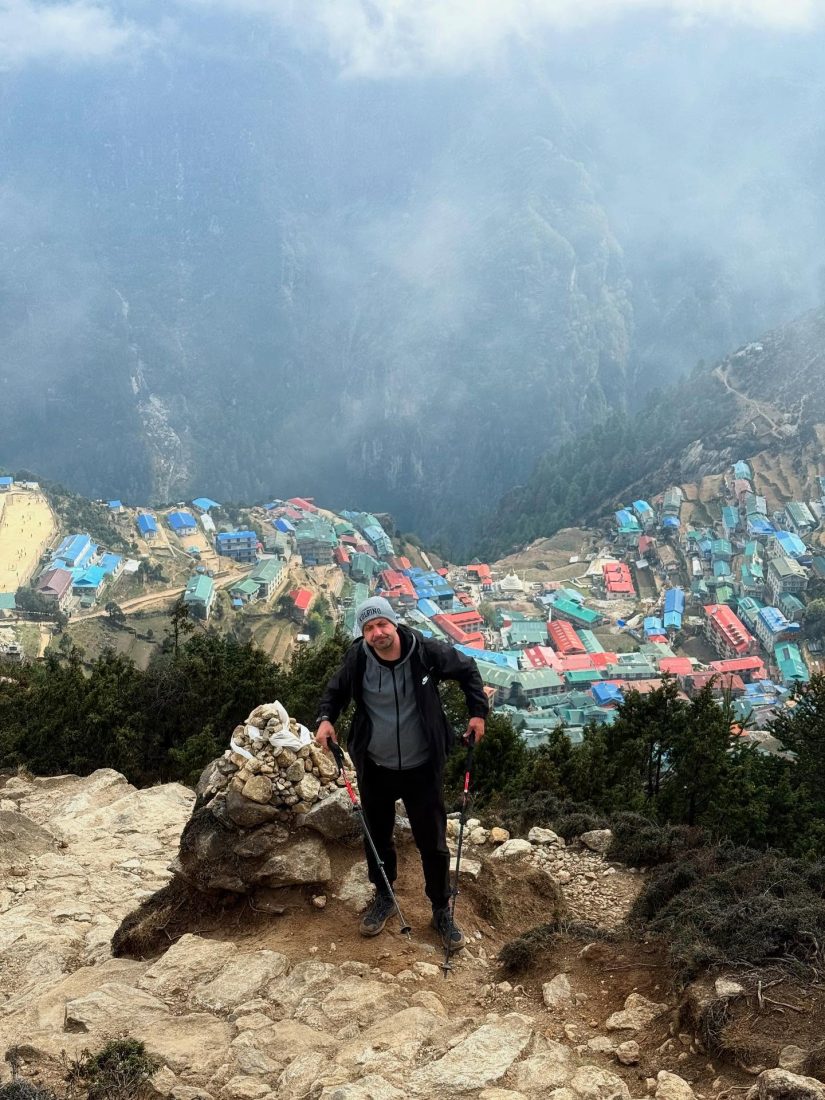
Day 4: Namche → Tengboche (3,860 m)
- Walk through rhododendron forest.
- Visit Tengboche Monastery with views of Ama Dablam and Everest.
Day 5: Tengboche → Dingboche (4,410 m)
- Trail passes Pangboche village.
- Arrive Dingboche, famous for potato fields and stone walls.
Day 6: Acclimatization in Dingboche
- Hike to Nangkartshang Peak (5,083 m) or visit Chhukung valley.
Day 7: Dingboche → Lobuche (4,940 m)
- Pass the Everest memorial chortens honoring fallen climbers.
Day 8: Lobuche → Gorakshep (5,164 m) → Everest Base Camp (5,364 m) → back to Gorakshep
- Reach EBC! Take photos near Khumbu Icefall.
- Sleep at Gorakshep.
Day 9: Gorakshep → Kala Patthar (5,545 m) → descend to Pheriche (4,371 m)
- Sunrise hike to Kala Patthar, best Everest view.
- Descend to Pheriche.
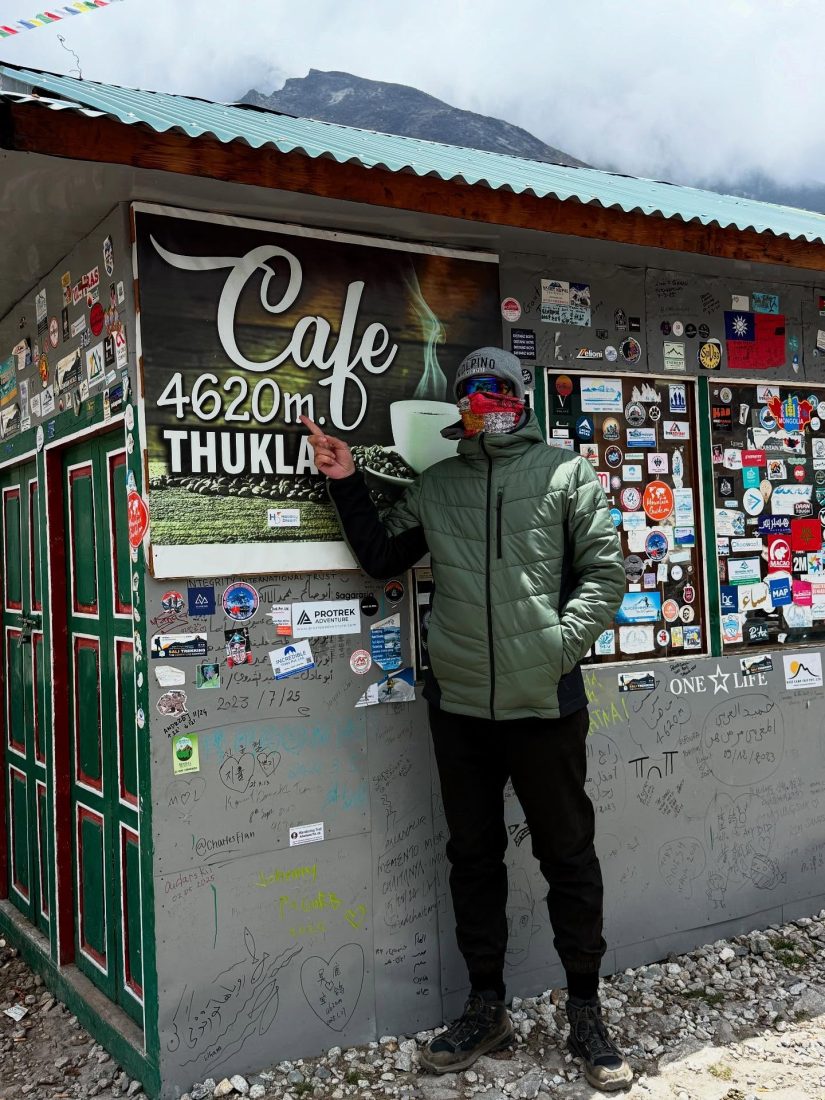
Day 10: Pheriche → Phortse Thanga (3,680 m)
- Less-traveled route, quieter trails.
Day 11: Phortse → Machhermo (4,470 m)
- Pass Dole village.
- Reach Machhermo, gateway to Gokyo.
Day 12: Machhermo → Gokyo (4,750 m)
- Cross the Ngozumpa Glacier, largest in Nepal.
- Arrive at the third Gokyo Lake.
Day 13: Climb Gokyo Ri (5,357 m) – Optional hike to 5th Lake
- Stunning panorama: Everest, Lhotse, Makalu, Cho Oyu.
- Optional trek further north to 5th Lake.
Day 14–16: Return to Namche → Lukla
- Retrace via Dole → Namche → Lukla.
- Celebrate last night with your crew.
Variations:
- Shorten trek: After EBC & Kala Patthar, fly out by helicopter from Gorakshep/Lobuche.
- Add challenge: Attempt the Three High Passes trek (Kongma La, Cho La, Renjo La).
- Family option: Just trek to Namche or Tengboche for Everest views without extreme altitude.
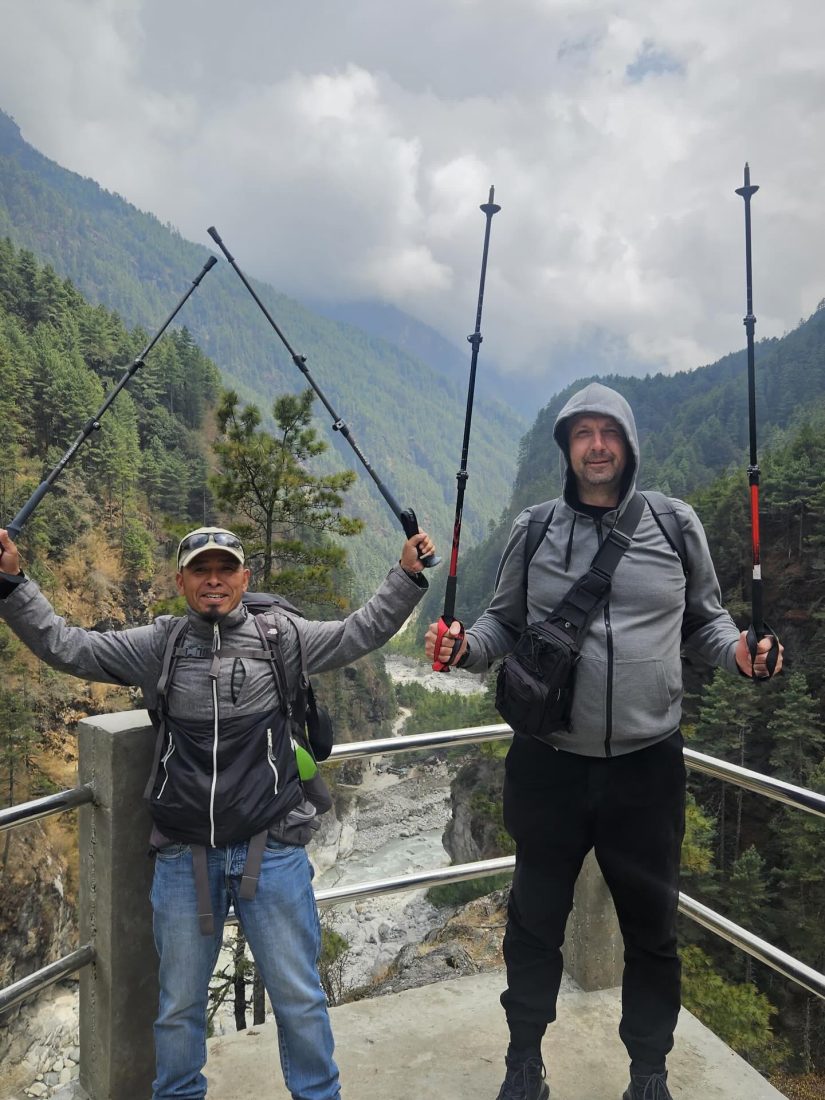
Why Acclimatization Matters – Everest Base Camp and Gokyo Lakes Trek
- Oxygen at 5,000 m is ~50% of sea level.
- Rest days at Namche and Dingboche reduce risk of AMS.
- Golden rule: “Climb high, sleep low.”
Packing List
Clothing & Gear Essentials
- Base layers (thermal tops and bottoms)
- Insulating mid-layer (fleece/down jacket)
- Waterproof / windproof outer shell (jacket and pants)
- Trekking pants + hiking shirts
- Warm hat, gloves (inner + outer), buff / neck gaiter
- Sun hat, sunglasses (UV protected)
- Trekking boots (well-broken in), plus camp shoes / sandals for lodge nights
- Gaiters (if snow / mud)
- Backpack (main + day pack)
- Sleeping bag rated for cold (down to -10°C or colder if in winter)
- Trekking poles
- Headlamp (with spare batteries)
- Water purification (tablets / filter) or water sterilizer drops
- Medicines & First-Aid
- Basic first-aid kit (bandages, antiseptic, blister plasters, etc.)
- Altitude sickness medicine (consult doctor; e.g. acetazolamide)
- Painkillers / anti-inflammatories
- Antibiotics (if possible, by prescription)
- Medication for stomach upset / diarrhea
- Sunscreen (high SPF), lip balm with UV, moisturiser (dry air)
7.2 Snacks, Food, Hydration
- Snacks to carry: energy bars, nuts, dried fruit, chocolate, electrolyte powder, biscuits
- Meals will be available at lodges/teahouses but sometimes limited menu at higher altitude; always good to have some extra food in case delays.
- Keep hydrated; water bottles + maybe insulated bottle (for warmth).
Snacks
- Energy bars, nuts, dried fruits, chocolate.
Costs (General Ranges) – Everest Base Camp and Gokyo Lakes Trek
| Category | Range (USD) |
|---|---|
| Permits | 50–60 |
| Flights (round trip) | 360–480 |
| Lodging + meals | 25–35/day |
| Guide | 25–40/day |
| Porter | 20–30/day |
| Trek package (EBC + Gokyo) | 1,200–2,500 |
| Helicopter share | 550–600/person |
| Insurance | 150–300 (varies) |
Safety & Health Tips – Everest Base Camp and Gokyo Lakes Trek
- Hydrate: 3–4 L/day.
- Avoid alcohol above Namche.
- Watch for AMS symptoms: headache, nausea, loss of appetite.
- Know turnaround points: descent is the cure.
Q: How hard is the trek?
The trek is considered moderately challenging. You don’t need technical climbing skills, but long days of walking (5–7 hours), steep ascents, and high altitude make it tough. With basic fitness and proper acclimatization, most trekkers can complete it.
Q: Is Wi-Fi available?
Yes, but limited. Most lodges sell Everest Link Wi-Fi cards (costs $5–10 per GB). Mobile coverage (Ncell/Nepal Telecom) works in parts of Namche and Gokyo but is patchy higher up. Don’t rely on stable connections every day. Buy local sim card in Kathmandu, cost around US$7 to 9 for 25 GB data
Q: Can I charge electronics?
Yes, but lodges charge extra. Bring a solar charger or power bank.
Q: How many days for EBC + Gokyo?
14–18 days depending on pace.
Q: How are the accomodations?
Lodges are nice with great view, delicious meal, most of places have attached bath and toilets.
Q: What altitude sickness feels like & how to avoid it?
Altitude sickness (AMS) usually starts with headache, nausea, dizziness, shortness of breath, or loss of appetite above 3,000m. Prevention:
Ascend gradually (rest/acclimatization days are vital).
Drink plenty of fluids, avoid alcohol.
Carry medication (Diamox) after consulting your doctor.
If symptoms worsen, descend immediately — don’t ignore them.
Q: Should I include Gokyo Lakes or stick to classic EBC?
If you have the time (3–4 extra days), adding Gokyo Lakes is highly rewarding. You’ll see turquoise glacial lakes, climb Gokyo Ri for a panoramic Everest view, and enjoy quieter trails compared to the busy EBC route. If time is short, classic EBC still delivers the bucket-list experience.
Q: What’s the difference in scenery / crowd if I go via Gokyo vs classic route?
Classic EBC: busier, more lodges, historic Sherpa villages (Namche, Tengboche, Dingboche).
Gokyo Route: fewer trekkers, more serene landscapes, glacier valleys, and the stunning chain of Gokyo Lakes. Both meet at Gorak Shep before Base Camp.
Q: What is Kala Patthar and is it difficult?
Kala Patthar (5,545m) is a black rock ridge above Gorak Shep. It’s the best viewpoint of Everest, especially at sunrise. The climb takes 1.5–2 hours, is steep but not technical, and can feel tough due to altitude. It’s optional, but highly recommended.
Q: Do I need snow gear in certain months?
March–May & Sept–Nov: trekking boots + warm layers are enough.
Dec–Feb: expect snow/ice, pack microspikes or gaiters.
Monsoon (Jun–Aug): not recommended due to heavy rain, clouds, and landslides.
Q: What are the pros & cons of helicopter vs plane vs walking portions?
Plane (Kathmandu/Manthali to Lukla): cheapest, scenic, but subject to delays/cancellations.
Helicopter: fastest, reliable in bad weather, great views, but costs around $550–600 pp (shared).
Walking all the way: traditional and immersive, but much longer (extra week from Salleri / Phaplu).
The Everest Base Camp & Gokyo Lakes trek combines the thrill of standing beneath the world’s tallest mountain with the serenity of turquoise alpine lakes. Whether you want to push further with the Three High Passes or keep it classic with Kala Patthar sunrise, this trek is a once-in-a-lifetime adventure.
We at Red Reach Himalaya specialize in creating seamless, safe, and memorable journeys with expert guides, multilingual support (Spanish, German, French, Italian), and custom itineraries. See our Everest Base camp and Gokyo Lake trek itinerary End of The Complete Guide to Everest Base Camp & Gokyo Lakes Trek.

